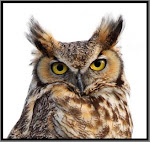I recently headed down to the San Luis Valley to visit my parents and try to locate and photograph Black Swifts at Zapata Falls. Zapata Falls is located on the road heading into the Great Sand Dunes National Park. To get to Zapata falls you need to drive up a very rough dirt road that leads to a parking area and campground. From the parking lot there is a steep 1/2 mile trail that ends at a fast moving mountain stream. At this point you must wade through the stream for about 100 ft. to get to the falls that are located in a kind of slot canyon formation. So as I was standing in the rushing, ice cold, water I got out my camera, turned it on and nothing, completely dead. This is understandable because the battery was still charging at my parents house. Lucky for me I didn't see any Black Swifts or I might have been upset. I did notice that a couple days later someone reported seeing 30+ Black Swifts at Zapata Falls on the Colorado Birding Society website. Maybe I was too early in the day (6:00 pm) or maybe i'm blind to Black Swifts. Hopefully next time i'll see some and bring my battery.
In spite of the Black Swift fiasco all was not lost. While visiting the Alamosa NWR we were lucky enough to spot this cooperative American bittern. Unfortunatly, you do not always have control over the lighting quality and this bird was back-lit with rather harsh mid-morning sunlight. You have to get up very early in the morning in Colorado to get quality lighting for bird photography.
Click on the photo to see the large version and check out this birds foot. Scary!

American Bittern
1/400 sec, f7.1, +2/3 exposure compensation, iso 250, from car using bean bag
 American Bittern
American Bittern
1/400 sec, f7.1, +2/3 exposure compensation, iso 250, from car using bean bag
While leaving the Sand Dunes we came upon this Burrowing Owl. Again the angle of the sun was not optimal. I have been to the Sand Dunes many times and this is the first Burrowing Owl that I have seen in the area.

Burrowing Owl
1/640 sec, f6.3, +1 exposure compensation, iso 250, from car using bean bag












